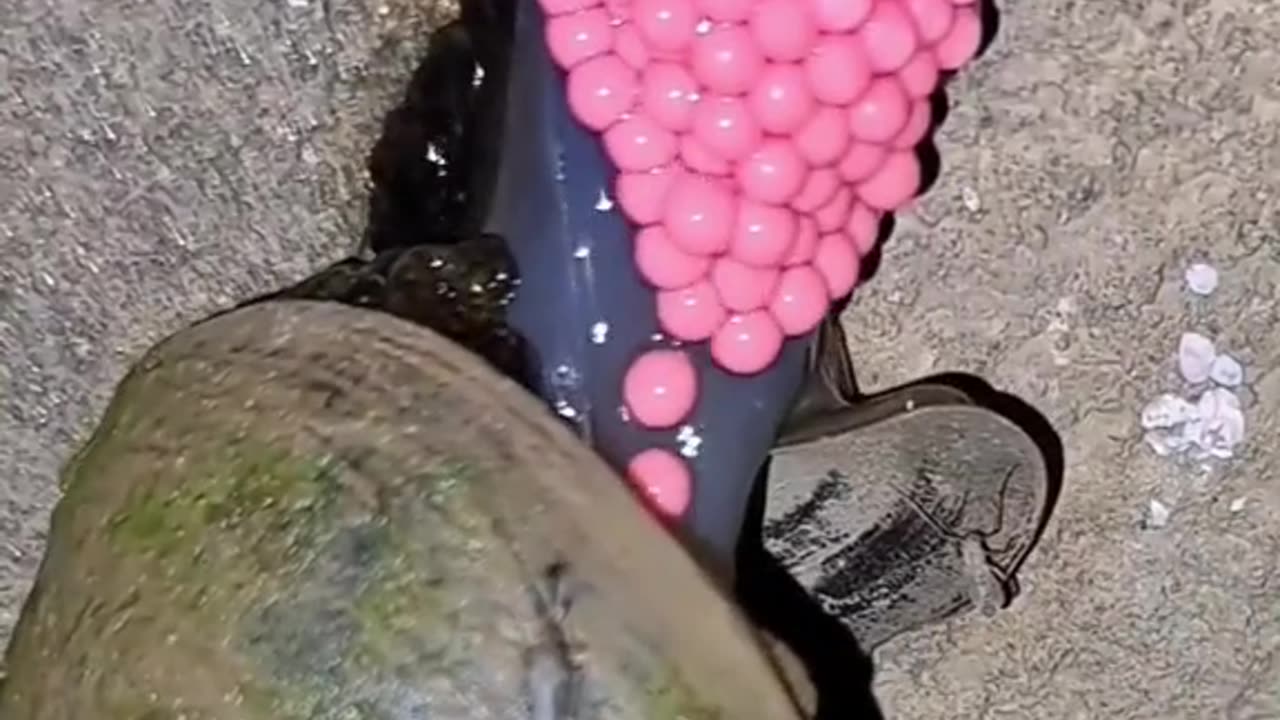Premium Only Content

Sanil gives eggs🥚
Snails, which are commonly found in various habitats around the world, including gardens, forests, and water bodies, are known for their slow and steady movements. They are fascinating creatures with a unique reproductive process. Rather than giving birth to live young, snails lay eggs.
When a snail is ready to reproduce, it typically searches for a suitable location to lay its eggs. This can vary depending on the species, but common choices include soil, leaf litter, or the surface of plants. The snail then begins to produce a sticky substance, which it uses to attach the eggs to the chosen surface.
The number of eggs a snail lays can vary, but it is not uncommon for a single snail to lay dozens or even hundreds of eggs at once. The eggs are usually small and translucent, with a protective coating that helps keep them moist. This coating also serves as a defense against predators.
Once the eggs are laid, it takes some time for them to develop and hatch into baby snails. The exact duration of this process depends on various factors, such as temperature and environmental conditions. In favorable conditions, the eggs hatch into tiny snails called juveniles.
These juvenile snails undergo a growth process, gradually developing their shells and becoming more independent. They feed on vegetation and other organic matter, gradually growing in size and maturity. With time, they reach adulthood and are capable of reproducing, continuing the life cycle of snails.
The process of snails laying eggs is an essential part of their reproductive strategy, ensuring the survival and propagation of their species. It serves as a reminder of the diversity and intricacies of nature's mechanisms for creating new life.
-
 1:35:28
1:35:28
BlackDiamondGunsandGear
10 hours agoThe TRUMP SLUMP?
33.2K6 -
 3:13:59
3:13:59
SilverFox
5 hours ago🔴LIVE - OBLIVION IS BETTER THAN SKYRIM NOW
31.5K1 -
 DVR
DVR
SpartakusLIVE
9 hours agoDuos w/ StevieT || Trios or Quads Later?!
27K1 -
 7:19:12
7:19:12
OhHiMark1776
10 hours ago🟢04-27-25 ||||| Halo Multiplayer Rumble: No. 13 ||||| Halo MCC (2019)
82.7K -
 2:12:28
2:12:28
TheSaltyCracker
7 hours agoThey Killed Her ReeEEEe Stream 04-27-25
152K309 -
 2:33:51
2:33:51
vivafrei
18 hours agoEp. 261: Criminal Judges ARRESTED! Election in Canada! Santos Sentenced! RFK Jr. & Autism & MORE!
192K129 -
 6:24:31
6:24:31
Amish Zaku
10 hours agoRumble Spartans "The One Year" Event
48.7K1 -
 7:28:41
7:28:41
Illyes Jr Gaming
8 hours agoLaid Back Sunday Night Warzone Stream!
20.8K -
 1:51:18
1:51:18
Nerdrotic
9 hours ago $7.28 earnedDiscoveries From Graham Hancock's "Fight for the Past" | Forbidden Frontier 099
50.2K12 -
 1:09:42
1:09:42
Sarah Westall
8 hours agoHidden Tech Resembles Star Trek: Malaysian Airline, Portals & Wormholes w/ Ashton Forbes
57.9K27